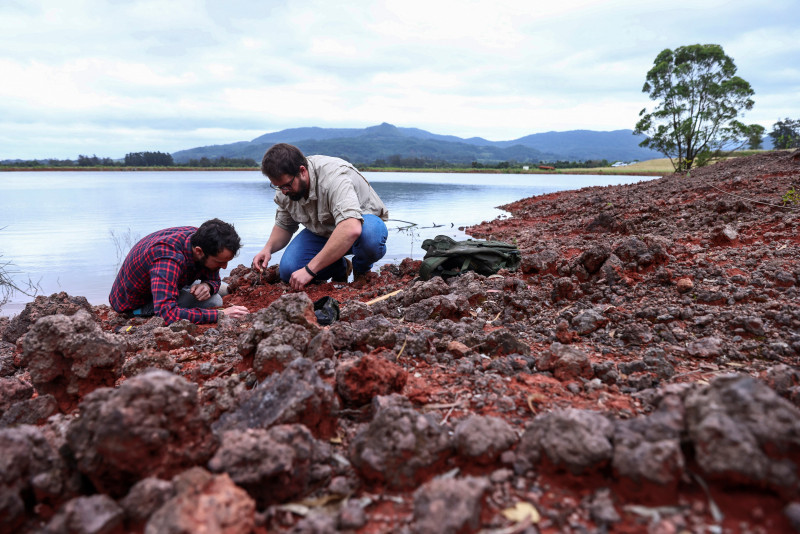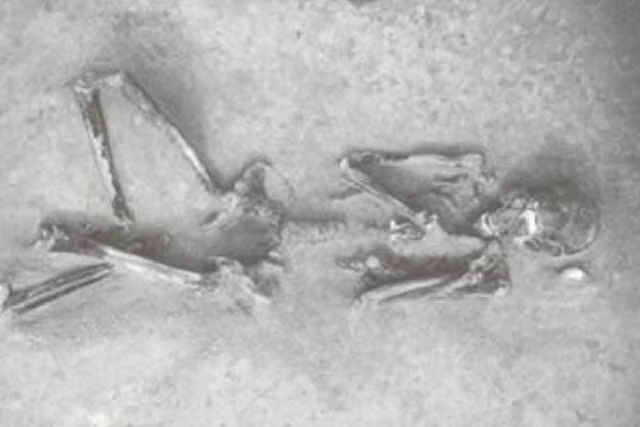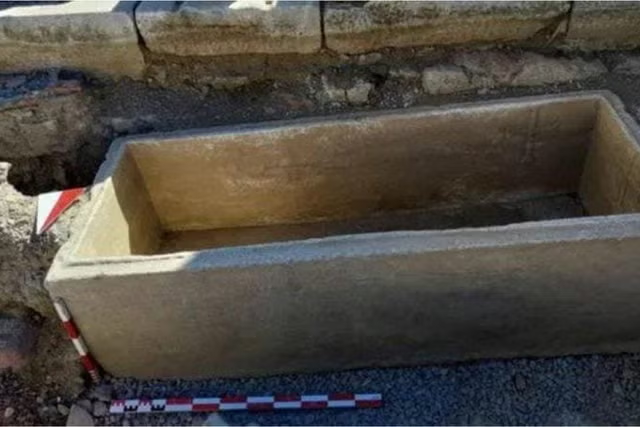Your support helps us to tell the story
Support NowThis election is still a dead heat, according to most polls. In a fight with such wafer-thin margins, we need reporters on the ground talking to the people Trump and Harris are courting. Your support allows us to keep sending journalists to the story.
The Independent is trusted by 27 million Americans from across the entire political spectrum every month. Unlike many other quality news outlets, we choose not to lock you out of our reporting and analysis with paywalls. But quality journalism must still be paid for.
Help us keep bring these critical stories to light. Your support makes all the difference.
A fossil, believed to be one of the oldest ever, could help explain the rise of the dinosaurs.
Scientists in Brazil announced the discovery of the ancient reptile dating back some 237 million years.
Named Gondwanax paraisensis, the four-legged reptile species was roughly the size of a small dog with a long tail, or about one meter (39 inches) long and weighing between three and six kg (7 to 13 pounds), the scientists said in a statement on Monday.
The small reptile would have likely roamed the land of what is today southern Brazil, when the world was much hotter.
The fossil has been identified as a new silesaurid, an extinct group of reptiles. Paleontologists debate whether silesaurids were true dinosaurs or possibly a precursor to the creatures that once dominated the Earth.

“Understanding the characteristics of these precursors could shed light on what was crucial for the dinosaurs’ evolutionary success,” the statement said.
Unearthed in a rock layer dating back to the Triassic period, between 252 million and 201 million years ago, the Gondwanax paraisensis fossil comes from the time when dinosaurs as well as mammals, crocodiles, turtles and frogs first arose.
In 2014, physician Pedro Lucas Porcela Aurelio found the fossil in the town of Paraiso do Sul in Brazil’s southernmost Rio Grande do Sul state.
He donated it to a local university in 2021, kicking off three years of research.
“Being the first human to touch something from 237 million years ago is extraordinary,” Aurelio told Reuters.
“It’s an indescribable feeling,” said the self-described paleontology buff since childhood.

The discovery is detailed in an article by paleontologist Rodrigo Temp Müller published late last month in the scientific journal Gondwana Research.
“The most important part of this finding is its age,” Müller said in an interview. “Because it’s so old, it gives us clues as to how dinosaurs came to be.”
He added that the remains were covered by a thick layer of rock when donated by Aurelio and initially only parts of the vertebrae were visible.
Gondwanax means “lord of Gondwana,” referring to the Gondwana landmass in the southern region of the supercontinent Pangaea before the continents broke apart, while paraisensis honors the town of Paraiso do Sul.
Disclaimer: The copyright of this article belongs to the original author. Reposting this article is solely for the purpose of information dissemination and does not constitute any investment advice. If there is any infringement, please contact us immediately. We will make corrections or deletions as necessary. Thank you.



